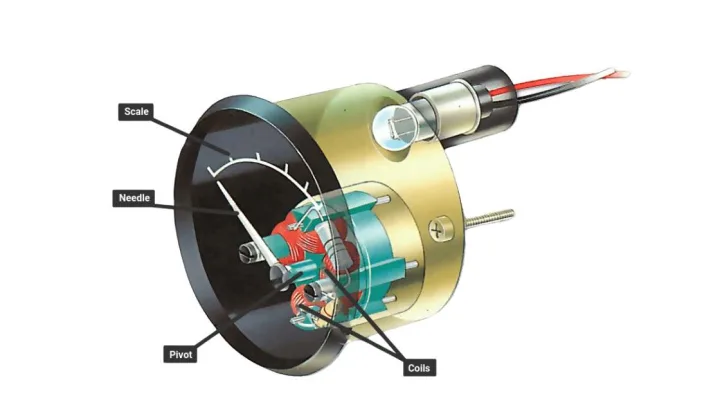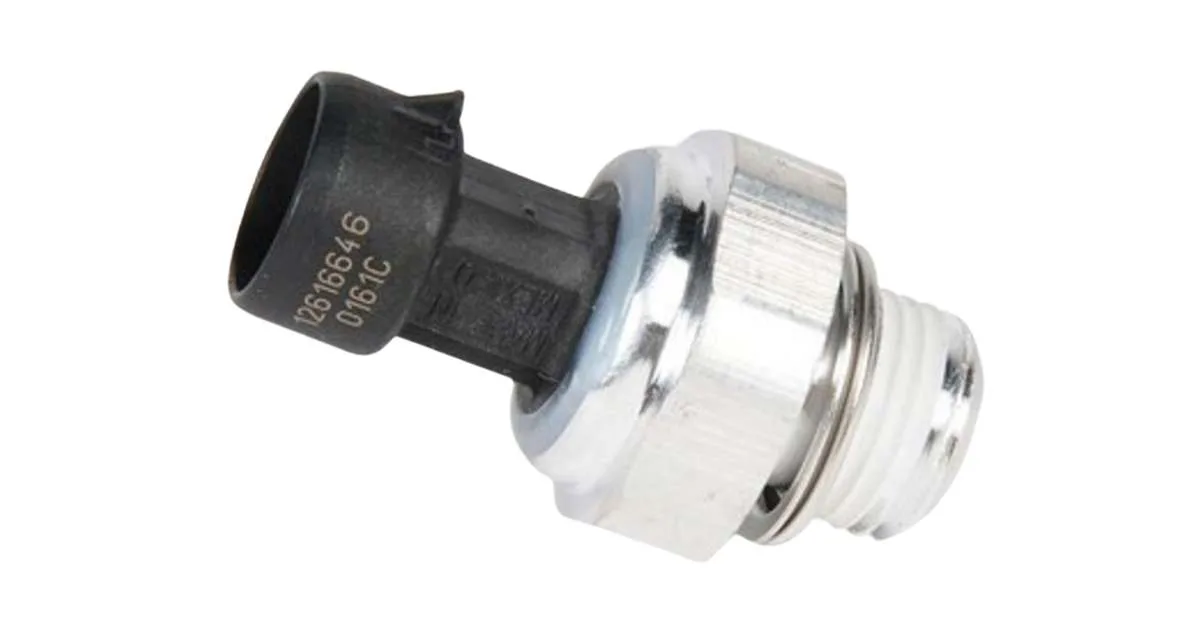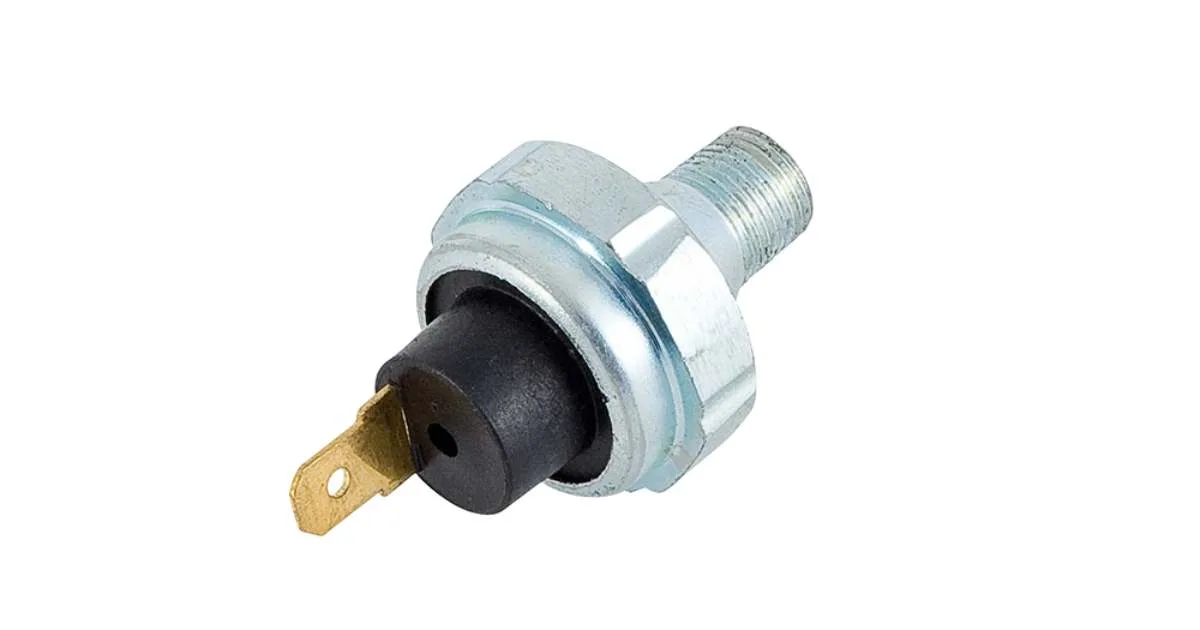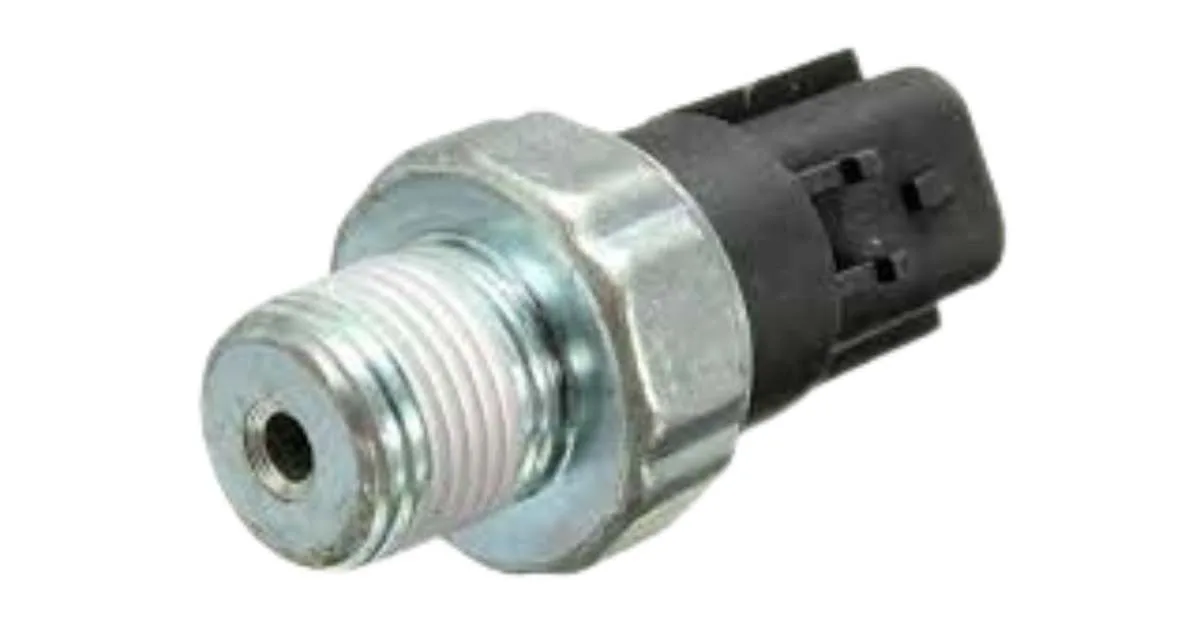
Fixing a car oil pressure sensor can seem tricky. But it's simpler than you think.
Oil pressure sensors play a vital role in your car's health. They monitor oil pressure and alert you to potential problems. When the sensor fails, it can cause false readings or warning lights. This can lead to unnecessary worry or missed issues.
Understanding how to fix this sensor yourself can save you time and money. Plus, it helps keep your car running smoothly. In this guide, we will walk you through the steps to identify and fix the problem. So, let's dive in and get your car back to perfect health!
Gather Necessary Tools
To fix your car's oil pressure sensor, you need specific tools. Proper tools make the job easier and faster. This section helps you gather everything you need.
List Of Tools Needed
Here are the essential tools for replacing the oil pressure sensor:
- Wrench Set: Different sizes for various bolts.
- Oil Pressure Sensor Socket: A special socket for the sensor.
- Screwdrivers: Both flathead and Phillips types.
- Torque Wrench: To ensure bolts are tightened to the correct specification.
- Gloves: Protect your hands from oil and dirt.
- Rags: Clean up any oil spills quickly.
- Safety Glasses: Protect your eyes from debris.
Where To Purchase Tools
Finding quality tools is essential. Here are some places to consider:
- Auto Parts Stores: Stores like AutoZone or NAPA have a wide selection.
- Online Retailers: Websites like Amazon and eBay offer many options.
- Hardware Stores: Stores like Home Depot often have the tools you need.
- Tool Specialists: Snap-on or similar brands offer high-quality tools.
Having the right tools makes the repair smoother. Always ensure tools are in good condition before starting the job.
 Locate The Oil Pressure Sensor
Locate The Oil Pressure Sensor
Locate The Oil Pressure Sensor
Fixing the car oil pressure sensor is a crucial task. Before you can replace or repair it, you need to locate the oil pressure sensor in your car. This sensor monitors the oil pressure and ensures your engine runs smoothly. Here is how to find it.
Consult The Car Manual
The first step to locating the oil pressure sensor is to consult the car manual. The manual provides detailed information about your car's components. Look for the section on the engine or oil system. It will have a diagram showing the exact location of the oil pressure sensor.
Common Locations In Different Car Models
Oil pressure sensors are generally found in a few common locations. Here are some typical places:
| Car Model | Common Location |
|---|---|
| SUVs | Near the oil filter |
| Sedans | Close to the oil pan |
| Trucks | Behind the engine block |
| Compact Cars | Adjacent to the oil pump |
Here are some more tips:
- Look for a small, cylindrical part connected by a wire.
- It is usually near the bottom or side of the engine.
- Use a flashlight for better visibility.
Once you locate the sensor, you can proceed with fixing it.
Prepare The Car
Fixing a car oil pressure sensor involves several steps. The first step is to prepare your car. Proper preparation ensures a smooth and safe repair process. Follow these steps to get your car ready for the oil pressure sensor fix.
Ensure Safety
Safety should be your top priority. Always wear protective gear like gloves and safety glasses. Make sure your car is parked on a flat, stable surface. Engage the parking brake to prevent any movement.
Lift The Car
To access the oil pressure sensor, you need to lift the car. Use a high-quality car jack to lift the front of your car. Once lifted, place jack stands under the car for extra support. Never rely solely on the car jack for support.
Here's a quick checklist to ensure you have everything ready:
- Protective gear: gloves and safety glasses
- Car jack and jack stands
- Flat and stable surface
- Parking brake engaged
With your car safely lifted and supported, you can now move on to the next steps. This preparation ensures you are ready to fix the oil pressure sensor efficiently and safely.
Remove The Faulty Sensor
Removing a faulty car oil pressure sensor is an essential task. It ensures your car's engine runs smoothly. Follow these simple steps to remove the sensor safely.
Disconnect Battery
First, locate your car's battery. Use a wrench to loosen the negative terminal. Disconnect the negative cable from the battery. This step prevents any electrical accidents.
Unplug The Sensor
Find the oil pressure sensor in your engine bay. It is usually near the oil filter. Unplug the electrical connector from the sensor. Be gentle to avoid damaging the wires. Use a socket wrench to remove the sensor.
 Install The New Sensor
Install The New Sensor
Install The New Sensor
After removing the old oil pressure sensor, it's time to install the new one. This step is crucial for ensuring your car's oil system functions properly. Follow these simple steps to position and secure the new sensor correctly.
Position The New Sensor
First, locate the sensor port where the old sensor was removed. Carefully place the new sensor into the port. Ensure it aligns properly with the threads. This helps prevent any damage during installation. Take your time to ensure it is seated correctly.
Secure And Tighten
Once the sensor is in place, begin to screw it in by hand. This ensures it doesn't cross-thread. After hand-tightening, use a wrench to securely tighten the sensor. Be careful not to over-tighten. This could cause damage to the sensor or the port. A snug fit is usually enough.
Finally, reconnect any electrical connectors to the sensor. Ensure all connections are secure and tight. Your new oil pressure sensor is now installed and ready for use.
Reconnect And Test
After replacing your car's oil pressure sensor, it's crucial to ensure everything is working properly. This section will guide you through reconnecting and testing your new oil pressure sensor. These steps will help you confirm that the new sensor is functioning correctly and that there are no issues.
Reconnect Battery
First, reconnect the car battery. Locate the negative terminal and attach the cable. Ensure it is tight and secure. This will restore power to your car's electrical system. Next, move to the positive terminal and reconnect it. Make sure it is firmly attached. This step is essential for the sensor to work.
Check For Leaks
After reconnecting the battery, check for any oil leaks around the sensor. Inspect the area where the sensor is installed. Look for any signs of oil seepage. Leaks can cause incorrect readings and damage your car. If you find any leaks, tighten the sensor or reapply sealant.
Test The Sensor
Finally, test the new oil pressure sensor. Start your car and let it run for a few minutes. Observe the oil pressure gauge on the dashboard. It should show a steady reading. If the gauge fluctuates or shows no reading, there might be an issue. You may need to recheck the installation or consult a mechanic.
 Maintenance Tips
Maintenance Tips
Maintenance Tips
Fixing a car oil pressure sensor involves checking the sensor's wiring and connections. Replace the sensor if damaged. Regular maintenance ensures accurate oil pressure readings and prevents engine damage.
Keeping your car's oil pressure sensor in good condition is crucial. Regular maintenance can prevent costly repairs. Below are key tips to help you maintain your oil pressure sensor effectively.
Regular Inspections
Inspect your oil pressure sensor regularly. Check for any oil leaks around the sensor. This can help you catch problems early. Clean the sensor area to avoid dirt buildup. Dirt can affect sensor accuracy. Use a clean cloth to wipe off any grime.
Signs Of Future Problems
Watch for signs of sensor issues. A flickering oil pressure light can indicate a problem. Low oil pressure readings on your dashboard can be a warning. A noisy engine can also be a sign. These symptoms mean it's time to check your sensor. ```
Frequently Asked Questions
How Do I Know If My Oil Pressure Sensor Is Bad?
Common signs include erratic oil pressure readings, oil pressure warning light, and engine performance issues.
Can I Drive With A Faulty Oil Pressure Sensor?
It's not recommended. A faulty sensor can cause inaccurate readings, potentially leading to engine damage.
What Tools Do I Need To Replace An Oil Pressure Sensor?
You'll need a wrench, oil pressure sensor socket, and possibly thread sealant for installation.
How Long Does It Take To Replace An Oil Pressure Sensor?
Replacing an oil pressure sensor typically takes about 30 minutes to an hour.
Conclusion
Fixing a car oil pressure sensor is easy with the right steps. Follow the guide carefully. Ensure you have all necessary tools. Disconnect the battery for safety. Replace the faulty sensor with a new one. Reconnect the battery and test the car.
Notice improvements in oil pressure readings. Regular checks prevent future problems. Keep your car running smoothly. Save money on repairs by doing it yourself. Feel confident with your car maintenance skills. Happy driving!
Disclosure
Some links may be affiliate links. That means we may earn a small commission at no extra cost to you.